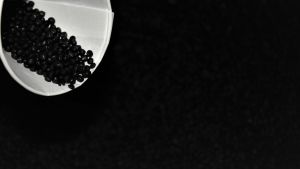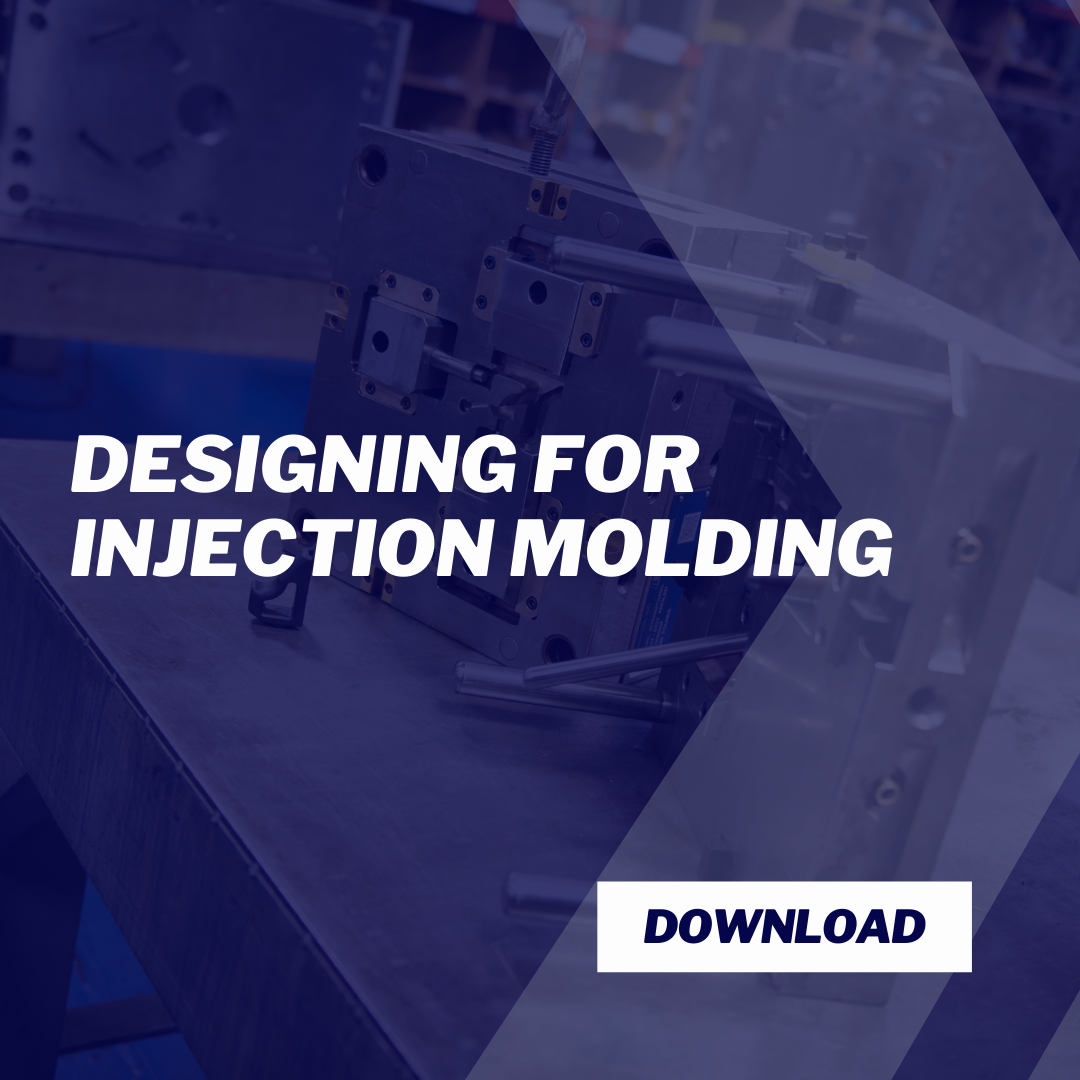what is overmolding?
an overview
Overmolding is an injection molding process used to mold one plastic (commonly a rubber-like plastic called TPE) over top of another component (substrate). The substrate is usually an injection-molded plastic part, but it could also be made from various other materials. Overmolding is used across several industries and serves a wide array of purposes. Below are a few examples of overmolding applications:
- Grip – Generally speaking, components with handles often need something to help the operator maintain grip. Most importantly, overmolded grips are safer for operators by providing increase grip, especially in wet conditions.
- Vibration Dampening – Rubber bumpers or mounts can protect components (like electronics) from vibrations.
- Comfort – Since the grip material is injection overmolded, it can be formed in any shape, making it great for ergonomics.
- Sealing – Overmolding can be used to create water-resistant seals on electronics and other devices.
- Sound Absorption – Much like vibration dampening, sound waves can be absorbed by overmolding.
Let THe Expert team AT bASILIUS assist with your Overmolding project.
Designing for Overmolding
Designing for overmolding can be difficult. However, ensuring your part is correctly designed for the overmolding process is critical. The design process starts with understanding the function of the part. Here are some good questions to ask upfront:
- What does your part accomplish? – Because the overmolding process has a wide array of applications, you need to understand the core function of your part. For example, if you are molding a seal on a water-resistant case, proper sealing is likely the most important function.
- What will the part be exposed to? – Exposure to UV light from the sun or harsh chemicals can damage certain kinds of plastics. If you understand where the part goes and what it’s exposed to, you can select materials that are more resistant to UV light than others.
- Why is the part overmolded? – If you are adding a TPE (a rubber-like plastic) to a handle, it could be for grip, ergonomics, comfort, or vibration dampening (see above). Answering this question helps you figure out which material is best for your purposes. For example, you may choose a certain grade TPE (there are many) to yield a high grip in wet conditions and another for high vibration dampening.
- What are the long-term production needs? – Part design factors, such as wall thickness, can affect cycle time and piece price. An example is a high vibration absorbing grip. The TPE could be thicker to allow better vibration absorption, but that may cause a longer cycle time. The long-term cost of the added material and cycle time could be huge at scale; however, it could be “worth it” in a lower volume application.
Once you clearly understand the function of your part, you want to look at the design of the part and make sure it’s optimized for the manufacturing process. Other design considerations include wall thickness, gate location, shrink, sealing features, and mechanical interlock features.
- Wall Thickness – Like any injection molded part, the wall thickness throughout the part should be consistent and thick areas should be avoided. Consistent wall thickness creates even plastic flow. Having plastic too thick can cause shrink marks and voids
- Gate Location – Plastic needs to get from the molding machine into the desired area of the part. When the plastic enters the part (at the gate), a small mark may be formed. For cosmetic parts, it’s essential to plan for that.
- Sealing Features – The mold must seal against the surface of the substrate properly to obtain clean edges between the substrate and overmold. If the substrate is plastic, some interference can be designed into the overmold tooling to compress and seal against it.
- Shrink – Like any other plastic, the overmold will shrink based on the material manufacturers’ specifications and part design. Since more shrink is present with larger wall thicknesses, it’s important to make sure that the overmold does not shrink away from the substrate.
Overmolding Materials

Most plastics manufacturers have application engineers to evaluate each application and stay in touch with the latest developments. There is no reason not to leverage their experience and knowledge. At the same time, we want to understand some general factors in material selection, like adhesion. We also want to have a solid grasp of material properties, like hardness and friction.
When selecting material, both the substrate and the overmold material should be considered. TPE plastic comes in several variations based on physical properties like elasticity and hardness, as well as its ability to adhere to other plastics. For example, one TPE could “feel” the same as another but may not adhere well to a polypropylene substrate. Here are some factors to consider:
- Bonding – Some Materials will bond together when overmolded, and others will not. A complete bond is the ideal situation, although it is not always necessary. If the materials can’t bond together or don’t need to, mechanical features like undercuts and indents can be designed to ensure a long-lasting connection.
- Temperature – Since you are molding plastic over plastic, the substrate must not deform under the heat and pressure of the injection molding process.
Material properties are important for applications requiring specific functions (like vibration absorption or grip). For overmolding TPE materials, there are a few properties that are key:
- Tensile Related Properties – Most data sheets will have several properties related to tensile strength, elongation, tensile modulus, etc. Tensile properties address how well the material performs under stretching conditions. If your project requires the overmolded features to stretch and return properly, this is an important property. You will also want to look at the gate location and the direction of plastic flow. There could be a drastic difference in tensile properties with and against the plastic flow.
- Compression Properties – Since TPE plastics are most commonly used because of their flexibility, it could be important for your project to understand how much the part can be compressed without permanent damage.
- Friction Coefficient – Friction is the amount of force it takes to move one surface across another. The coefficient of friction varies with different types of TPE. The surface texture of the mold is also a factor.
- Hardness – The hardness property is a material’s ability to resist indentation. Because the hardness of different materials can vary so drastically (think about TPE vs. hardened steel), different scales are used. If you are comparing two materials, make sure that they are on the same scale. While the “hardness” of a material is commonly associated with how a TPE plastic feels, adding in the flexural modulus gives the full picture.
- Flexural Modulus – A material’s resistance to bending is the flexural modulus. This property is the second factor in the “feel” of TPE and should be considered for grip features.
- Material Thickness – From a design perspective, the thickness of the material will alter the effectiveness of the material properties to perform. A thicker wall section of TPE will absorb more vibration and feel softer. Having a thin wall section of TPE will diminish the material’s ability to absorb vibration.
Overmolding Operations
Generally speaking, the overmolding process is the same as an injection molding process, except that the plastic is molded over another component. The difference lies in operation. With overmolding, the substrate is loaded into the mold on each cycle. In addition, how the substrate is loaded creates two different overmolding operations:
1. Manual Molding
With a manual operation, the substrate is injection molded via a traditional injection molding process. The substrates are then hand-loaded into another mold for the overmolding operation. The operator will also remove the finished part from the mold, provide an inspection, and package the parts. Manual overmolding is the most common procedure for low to mid-volume overmolding.
The advantage of manual overmolding is simplicity. The tooling required for the substrate and overmold is simple (when compared to two-shot tooling), and there is no secondary equipment required. The downside is the labor allocation and potential for inconsistent cycle times created by operators. As annual order volumes increase, the labor involved can become significant enough to justify investment in automation systems or a two-shot molding operation.
2. Two-Shot Molding
Overmolding vs. Insert Molding
Insert molding and overmolding are both processes for using the injection molding process to mold plastic around something. The key difference is that overmolding is typically molding a rubber-like plastic over the top of another plastic component, while insert molding involves molding plastic around a non-plastic component.
For more on insert molding check out our insert molding overview.


